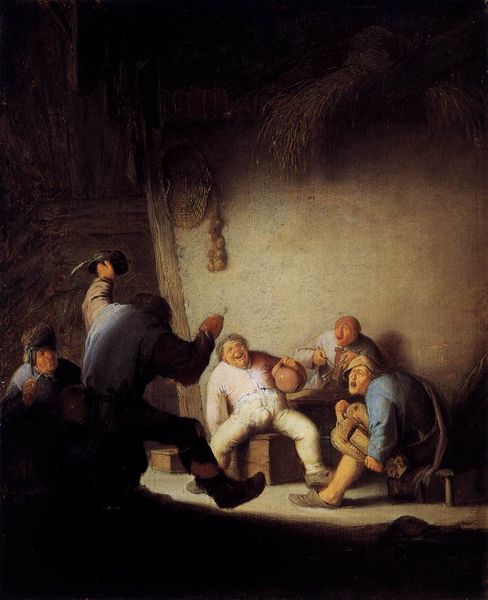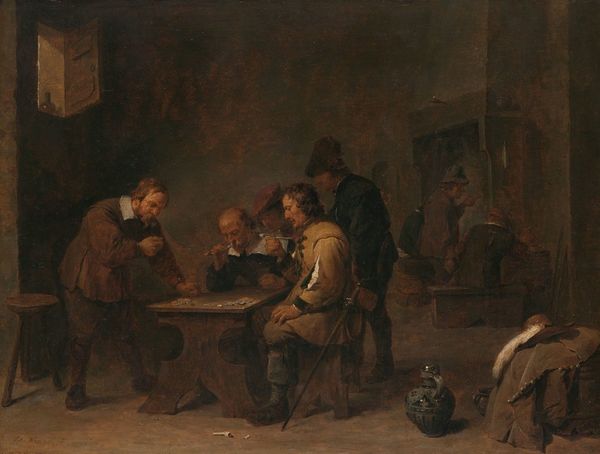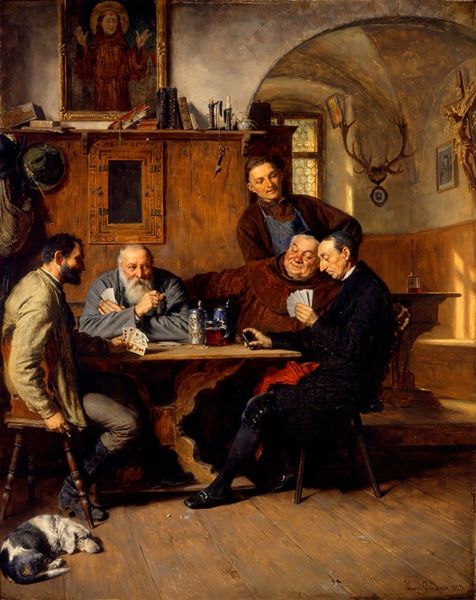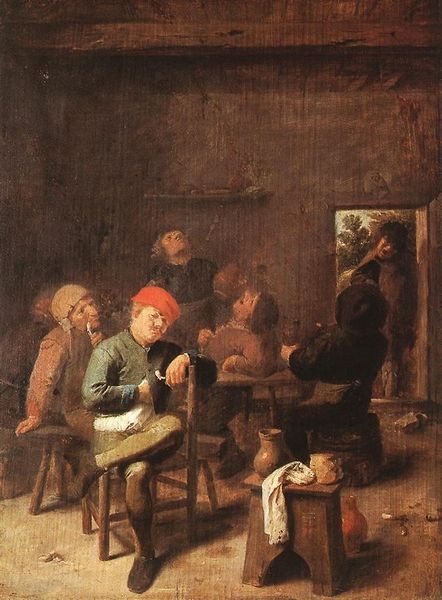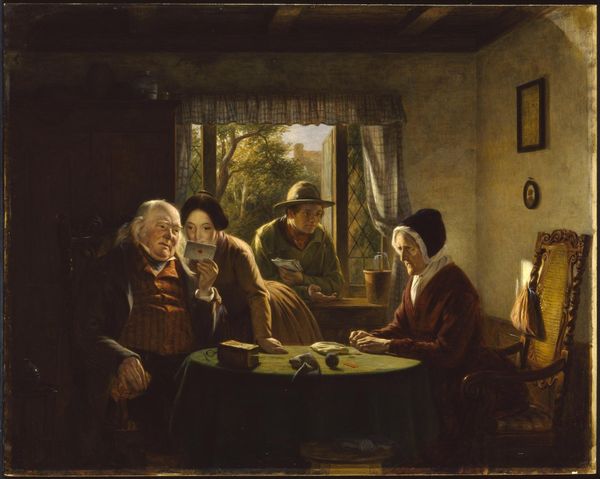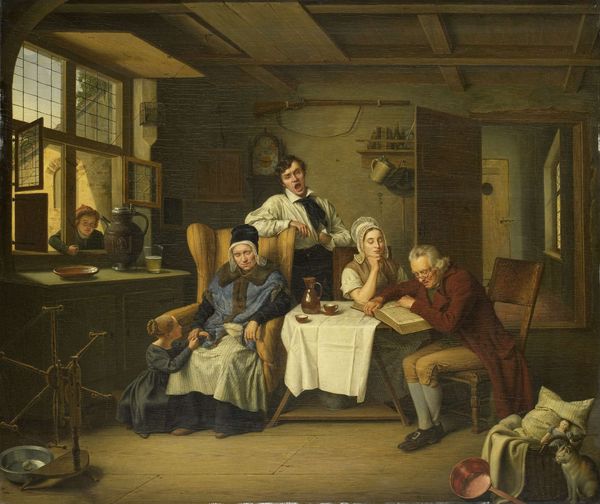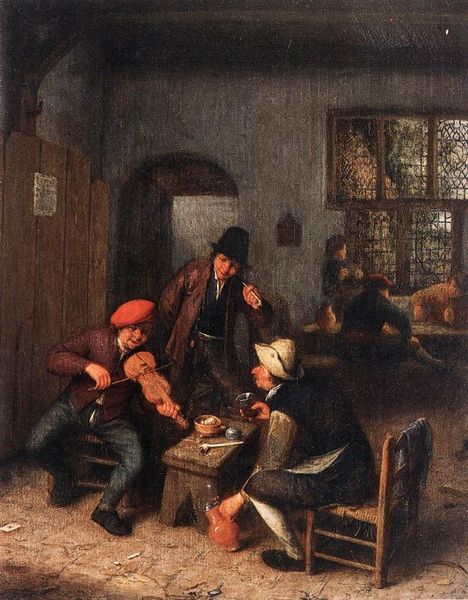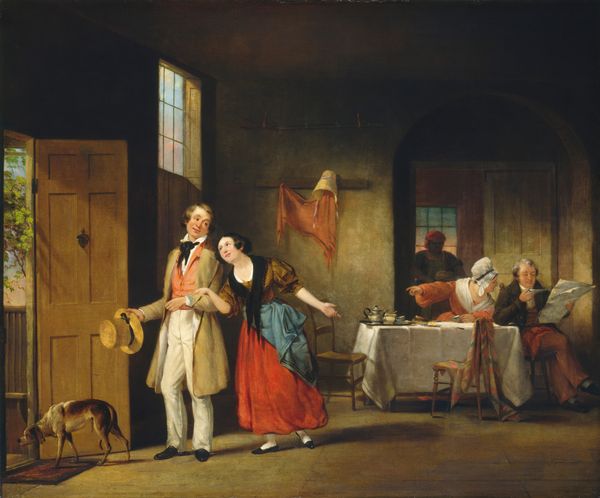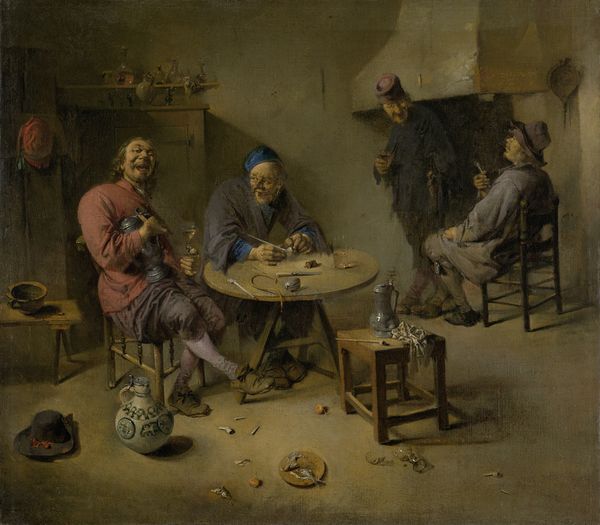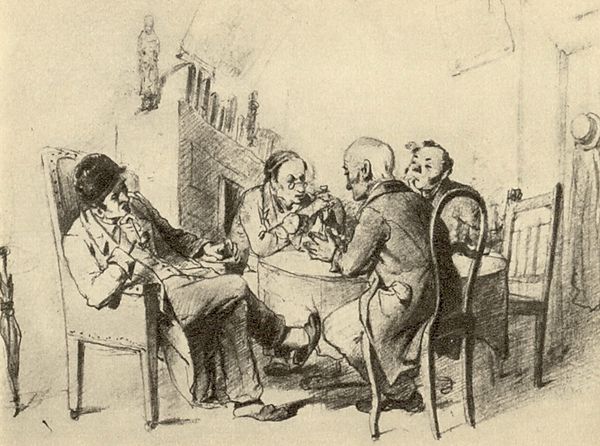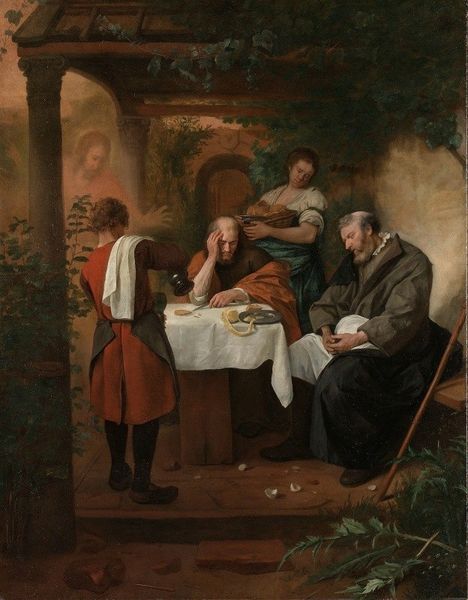
Copyright: Public domain
Editor: Here we have Vasily Perov’s "The Conversation at the Round Table" from 1866, rendered in oil paint. It immediately strikes me as a kind of critique, almost satirical. These men look so…disheveled and absorbed. What can you tell me about its broader context? Curator: Well, it's essential to understand the socio-political climate of Russia at the time. Perov belonged to a group called The Wanderers, and they believed art should serve a social purpose, exposing societal ills. This piece, and others by The Wanderers, were in direct response to the Academy's adherence to more classical and traditionally approved themes, right? Editor: So, a sort of visual rebellion against established norms? Curator: Exactly. Consider the scene—a seemingly private gathering. Are these men meant to represent certain segments of Russian society? The painting seems to comment on the debates and social dynamics of the time. The men don't exactly inspire confidence, do they? One appears overly comfortable, sprawled in a chair. Is this informality symbolic, or does it simply indicate they’re ordinary citizens? Editor: That's interesting; their apparent casualness becomes a statement in itself. It almost humanizes them, while still being critical. Does the "round table" imply something too? A level playing ground for debate perhaps? Curator: Precisely. However, what kind of conversation are they *really* having? Who benefits? Who is excluded? Perov invites us to question the power structures, or lack thereof, even within this seemingly democratic setting. Editor: So, beyond the aesthetic appeal, it’s a prompt for viewers to reflect on the dynamics of power and dialogue in society, then and now? Curator: Yes, art often becomes most potent when it sparks such self-reflection. Understanding the forces behind the brushstrokes is critical to seeing the deeper currents.
Comments
No comments
Be the first to comment and join the conversation on the ultimate creative platform.
